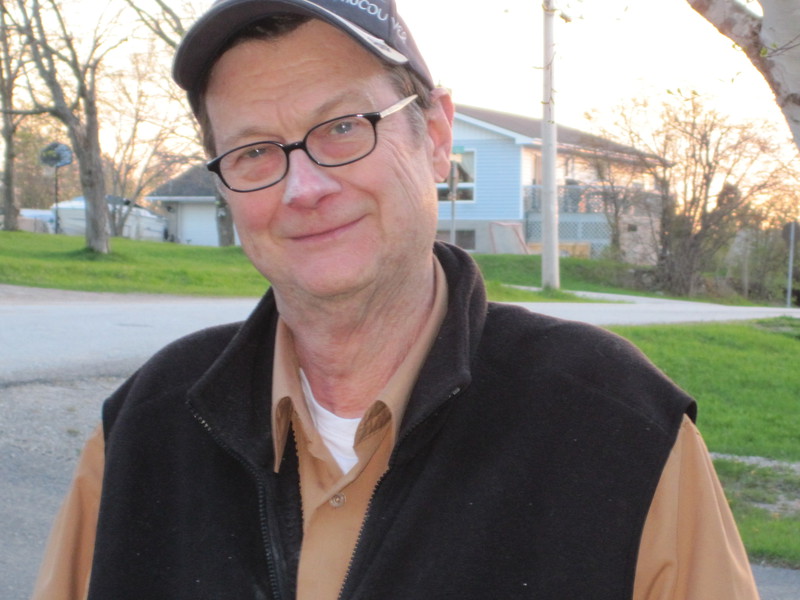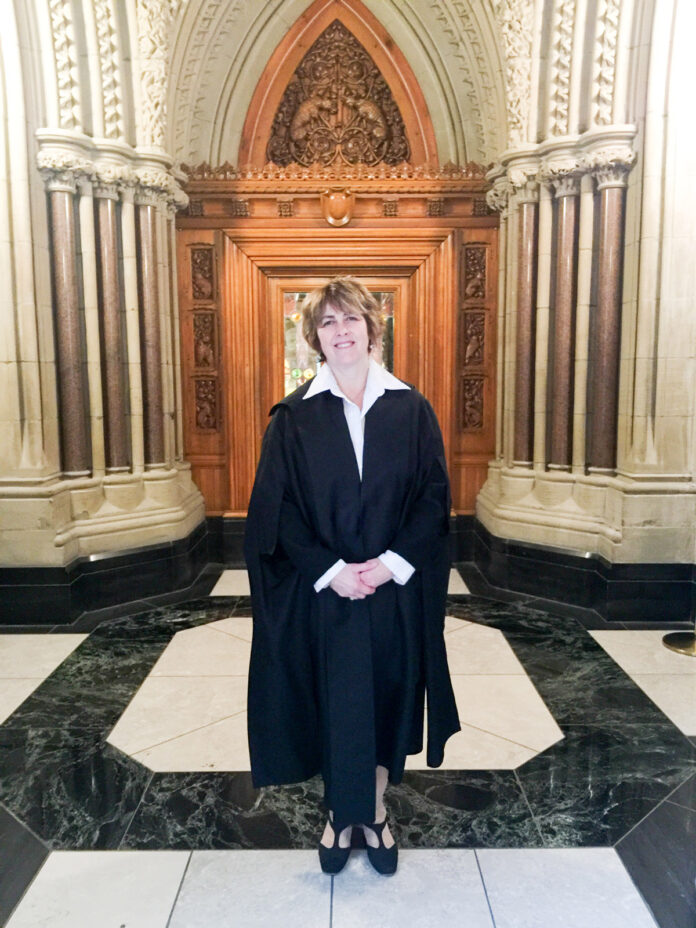Island historian and community benefactor remained a vital resource even to his final day
Manitoulin Island has lost an important public historian.
With the passing of Alexander (Sandy) Manson McGillivray on Monday, September 25, the community lost not only an important historian but someone who had devoted much of his life to being a volunteer, a friend to many, a generous and compassionate man and a wonderful neighbour. Sandy died, gently and peacefully as he had lived, following brief stays at the Manitoulin Health Centre in Little Current and at Health Sciences North in Sudbury.
Sandy was a Haweater, born in Providence Bay on January 31, 1939, the son of Manson and Bernice (Boyle) McGillivray.
His early years were spent largely in Providence Bay where he began his education at the one-room schoolhouse there.
Sandy’s grandparents William (Billy) and Rosalie Boyle were prominent in his young life. His grandfather had owned a hotel in Providence Bay where he raised his family but in 1938, purchased the Manitoulin House hotel in Little Current and that became his new base of operations. A young Sandy and his mother and grandparents and otehr relatives moved to a home on Fulton Avenue in Toronto’s East end in the mid-1940s. Sandy was a man of many parts and one of these parts was a bible scholar. Part of his early years in school in Toronto were at Sunday School run by the Wesleyan Methodist church and that experience was no doubt the beginning of his lifelong interest in bible scholarship.
This early experience in an evangelical Christian environment continued throughout his life and when Sandy, his mother, grandmother and Aunt Viola Boyle returned to Little Current in the early 1970s, the family chose the meetings of Pastor Ernest Gray, at his home on Blake Street East, as their place of worship, twice weekly.
Following Pastor Gray’s death, the family became members of the Grace Bible Church congregation where he remained an active member until his death.
Sandy had become widely known and admired as a Manitoulin Island historian, the author of the 816-page detailed history and reference book titled ‘The Little Current Story.”
Sandy’s book was about much more than Little Current: it detailed important events in every community on Manitoulin, neatly laying out Little Current’s and Manitoulin’s pioneer origins following the signing of the 1862 Manitoulin Treaty, the surveying of the land not reserved for First Nations communities and the taking up and settlement of this land by people of European descent. The book clearly examines several themes (business, transportation, education, tourism, healthcare) in bite-sized eras of about five-year duration.
The book was published a decade ago, in 2013, but the research and original writing were undertaken by Sandy over a nine-year period, from 2000 to 2009, when he wrote a weekly column (also called The Little Current Story) for The Manitoulin Expositor.
Sandy, a Little Current municipal councillor for 15 years, served as the chair of the town’s centennial committee and, as part of the centennial celebrations, had offered to research and write a history column for the paper during 1990, the centennial anniversary of the incorporation of Little Curent. In an 1999 interview with Jim Moodie, the editor of The Expositor when the column had caught up with the current time and was retired, Sandy observed, “I got sort of hooked on it. It was interesting to me to confirm or contradict a lot of the things I’d heard about the town’s past.”
Four years later, Sandy edited these nine years of weekly columns, almost all of them illustrated, into the large tome that will be a resource for generations to come. In this endeavour he was assisted by Marilyn Irish (who re-typed his manuscript) and genealogist and historian Norma Hughson of Little Current.
Norma Hughson grew to know Sandy well during the intense time of organizing the manuscript for publication. “He was a great historian and was great to work with,” she says, adding, “he was a very interesting man.”
Sandy’s interest in history was built in. He had undergraduate and Master of Art degrees in history from the University of Toronto and taught high school history for a time in Toronto. (He also had a stint of teaching elementary school.)
In fact, his return to Manitoulin was prompted by a tentative offer to teach history at Manitoulin Secondary School, something that didn’t come to fruitian as the person Sandy was going to replace changed course and decided to remain on staff at MSS.
While some may have become unhappy with the community resulting from this kind of misunderstanding, Sandy did not, and the result was that the community benefited greatly from his full-time attention.
He served consecutive terms as councillor for the Town of Little Current (now part of the amalgamated Town of Northeastern Manitoulin and the Islands), chaired the Little Current Library Board for many years and oversaw the library’s move from its tiny quarters at the “old jail” building on Campbell Street West to a much larger footprint in the former St. Bernard’s Catholic School building on Meredith Street West where it shared quarters with the municipal office, with the promise that it would one day occupy the entire building, which it now does.
Sandy was also active with the Little Current-Howland Centennial Museum (now the Sheguiandah Museum) board at a time when it when it too was expanding its footprint and resources. When Sandy retired from Little Current municipal politics, he was the longest-serving councillor in the town’s history.
Al MacNevin, the long-time Mayor of Northeastern Manitoulin and the Islands, served terms on council at the same time as Sandy. Mayor MacNevin recalls Sandy as an excellent councillor. “He was the kind of councillor who could recall everything that council had said or done. He had a mind like a steel trap.”
Mayor MacNevin also observed that Sandy liked to keep everyone (on council) getting along and was a mediator. “He also always wanted to get all the facts on issues and he was a good mentor for many of us.”
“He certainly cared deeply about the community” Mayor MacNevin added.
Sandy was also a musician. He’d began playing the violin, and taking lessons, as a child but it was a lifelong interest and he enjoyed playing with friends Barb Cranston, Gert Aelick and others at the Manitoulin Centennial Manor, the Manitoulin Lodge in Gore Bay and elsewhere when he was asked.
During his research for his Little Current Story column, he came across the lyrics for the battalion song of the Soo to Sudbury 119th Battalion that was raised during the First World War.
He wasn’t able to find sheet music for the song at the time so he sat down at his piano and composed a rousing accompaniment to the lyrics of “The Men ‘O The North” battalion song which he dully rendered in musical notation on staff paper. (He eventually located sheet music with the original composition.) He organized a public performance of a choral group singing the old song, likely the first time in nearly a century.
It was noted earlier that Sandy was ‘a man of many parts.’
He changed the oil in his cars and replaced his summer for winter tires routinely, as long as he was able.
But he also built things: large things.
Besides the three garages he built for himself on various properties he owned, he built an up and down duplex building on a lot he owned on Robinson Street, beside Channelview Apartments. And he built it himself, relying on trades for cement finishing, plumbing and electrical. For a couple of years, Sandy could be found daily up on scaffolds and ladders, doing his work.
After that, he built another, smaller home, beside his own home on Robinson Street, eventually selling both these properties.
Sandy was a gentle person, a good man who loved people.
A long-time neighbour, Julia McCutcheon observed that, “Sandy sure knew how to visit.” She also said that in the more than 45 years they’d been neighbours, she had never heard him utter a harsh opinion of anyone.
He was inquisitive, never pushy and sympathetic, Ms. McCutcheon observed.
Sandy enjoyed travelling. He had relatives who had moved to California in the 1930s and he made two road trips (with his mother as company) to visit them and also made a solo road trip to visit a cousin in Oregon.
He went to England, where he spent a great deal of time at the British Museum in London, and, with his then-Pastor John Vankesteren (now deceased) and a larger party, visited the Holy Land and Egypt. He gifted his friends with a CD he made from this trip, with musical accompaniment by himself.
Those weren’t the only CD compilations Sandy made. He took the time to interview all of the Second World War veterans in Little Current and area, recording their memories of service in their own words.
There are several other “old timer” recordings as well and copies of all of these are archived at the NEMI Library and the Sheguiandah Museum.
Sandy McGillivray was, in the words of his friend Brenda Caloyannis, “a highly intelligent, gentle and kind man.”
He is survived by many cousins and many many friends.
He will be missed. In his honour and memory, the Town of Northeastern Manitoulin and the Islands lowered the flags on the municipal office and public library buildings to half-staff following his passing.






